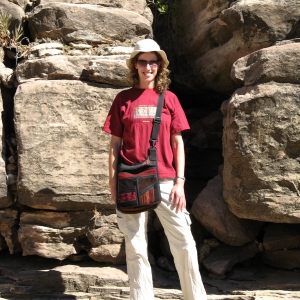Households: Past and Present
Resources
Scientific research and publication, and academic writing more generally, are part of conversations that are sometimes contentious, sometimes conducted over our colleagues’ heads, and sometimes brilliant, but always conversations with others. This principle, central to my Writing 101 (20) courses, frames our discussions of ways we use others’ work; how we narrow or expand our research questions; and how we present arguments as contributions to existing disciplinary discourses. Whether adopting others’ methodologies for reconstructing Roman gender roles, or drawing conclusions about variability in Syrian agricultural strategies, we engage with other researchers and offer something substantial to them in turn. This means that a good argument is nuanced, complex, and necessarily incomplete. My students often come to college used to writing that puts forth a single assertion that they proceed to “prove.” They are usually unsure what to do with counterevidence or contradictory data. Therefore, one of our collective tasks is to explore the role of uncertainty in arguments. We discuss how to incorporate competing interpretations of patterns in data, and the inherently limited scope of archaeological case studies in the vast expanse of prehistoric space and time. Though we work hard together to strengthen our papers, I teach my students that they always need to honestly deal with objections and contradictions, both those they can anticipate and those identified by peer readers.
This conceptual approach to academic writing is particularly fruitful in my archaeology courses. Some sources of uncertainty in archaeological research include artifacts’ poor preservation in some regions, and ephemeral characteristics of culture like religious ideology that may leave few material traces. I get great satisfaction when students start constructing sophisticated arguments that take a position within well defined theoretical contexts and present narrow central claims correlating two or three specific variables. Their papers also ideally draw on multiple levels of evidentiary support: raw data, others’ analyses of patterns in their data, and differential interpretations of those conclusions. Thus students’ discomfort with uncertainty in an essay is quickly replaced with a set of rhetorical tools they use to explore or even exploit competing explanations for diachronic patterns in household and community organization.
Although we work explicitly within a framework of scientific research and writing in my classes, I always do so with an eye toward highlighting clear moments of transferability between disciplines. The major writing projects assigned in Households: Past and Present give students practice in constructing different kinds of arguments that are variably transferable to class work in the humanities, social and natural sciences. Writing projects 1 and 2 ask them to develop narrow, testable central claims and gather multiple lines of evidence. The first evaluates a thesis with evidence gathered from multiple sources, and the second tests a claim with data from a single case study, allowing greater analytical depth and targeting attention to contextualizing a claim in a theoretical debate. The final research paper, student peer review panels, and cover letter assignment sequence gives students the opportunity to define and conduct a research project of their own choosing, from start to finish. They also present the results of individual research projects as conference presentations and posters. Thus, the process of “real” scientific research is the model for our work in each course unit. Students generally appreciate that I treat them as “armchair archaeologists,” and that the process of defining, drafting, rewriting, revising, and presenting their own research is something they get to experience firsthand. I also greatly enjoy watching them discover how their insights about prehistoric households and communities from Inuit whale hunters to Inka farmers are directly applicable to discussions about globalization’s impact today on households and communities around the globe. Those connections make the past come alive in a way that Mayan pottery and Egyptian tombs cannot.
